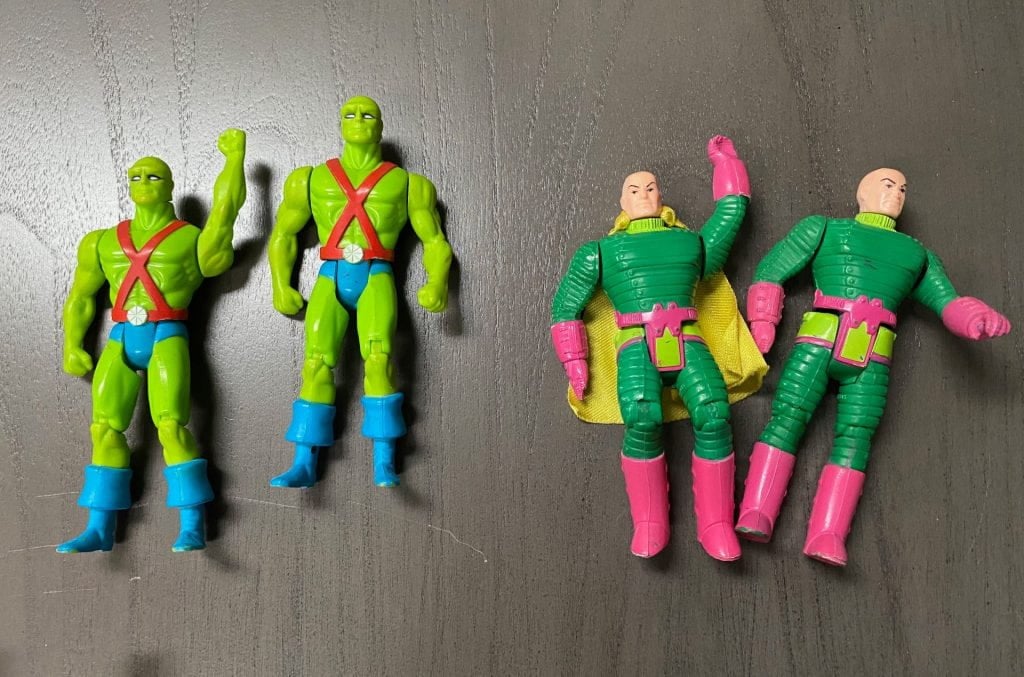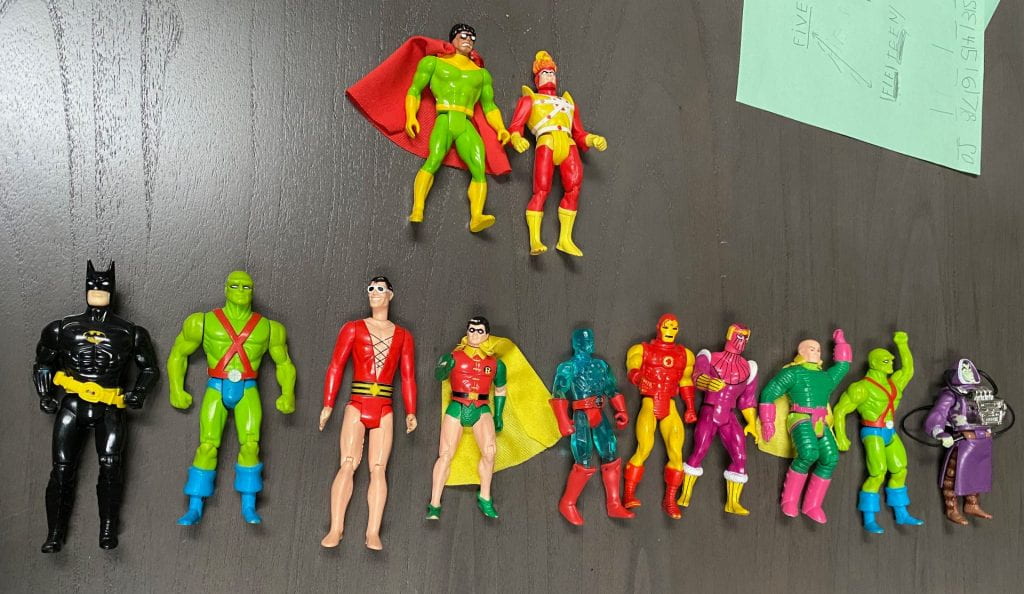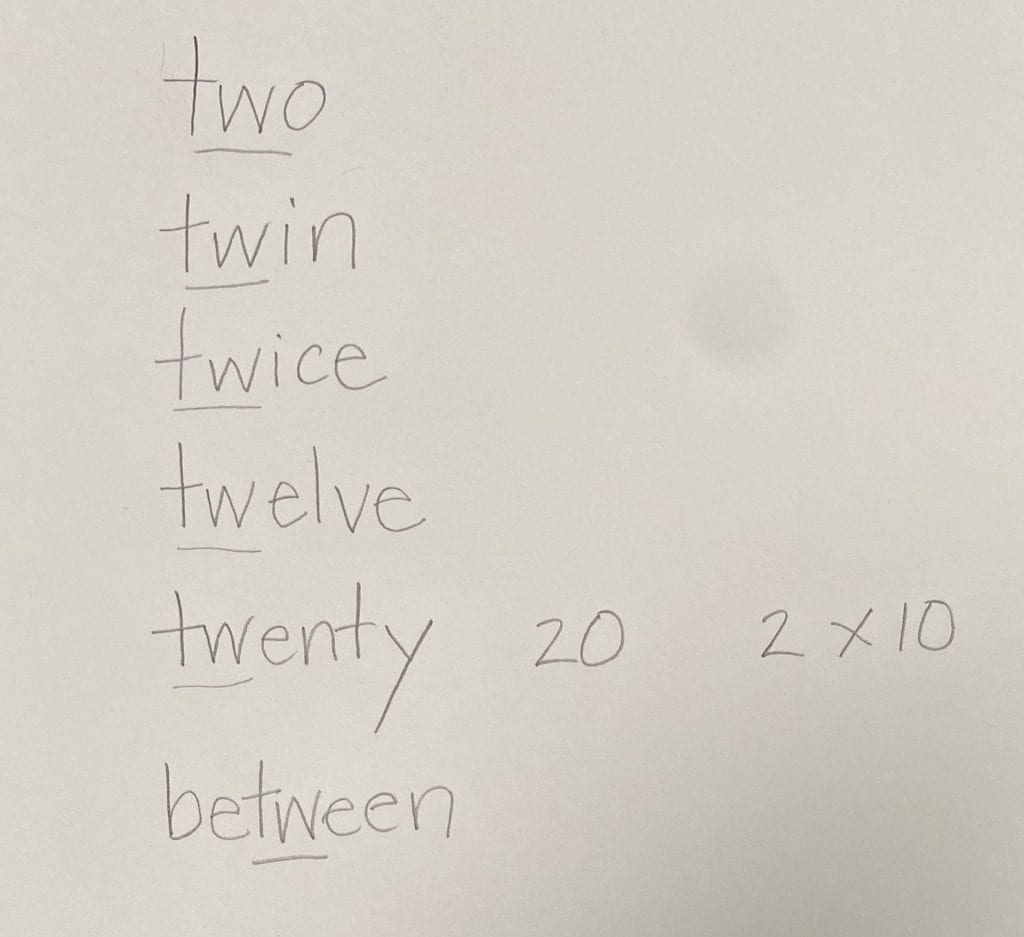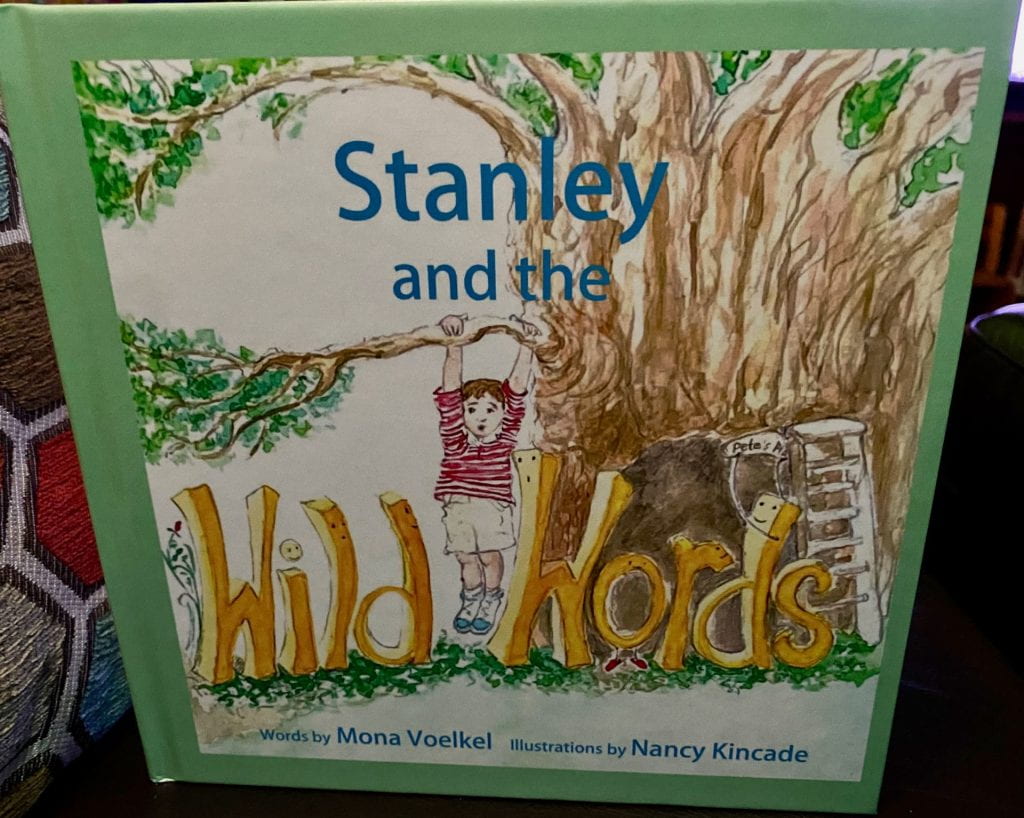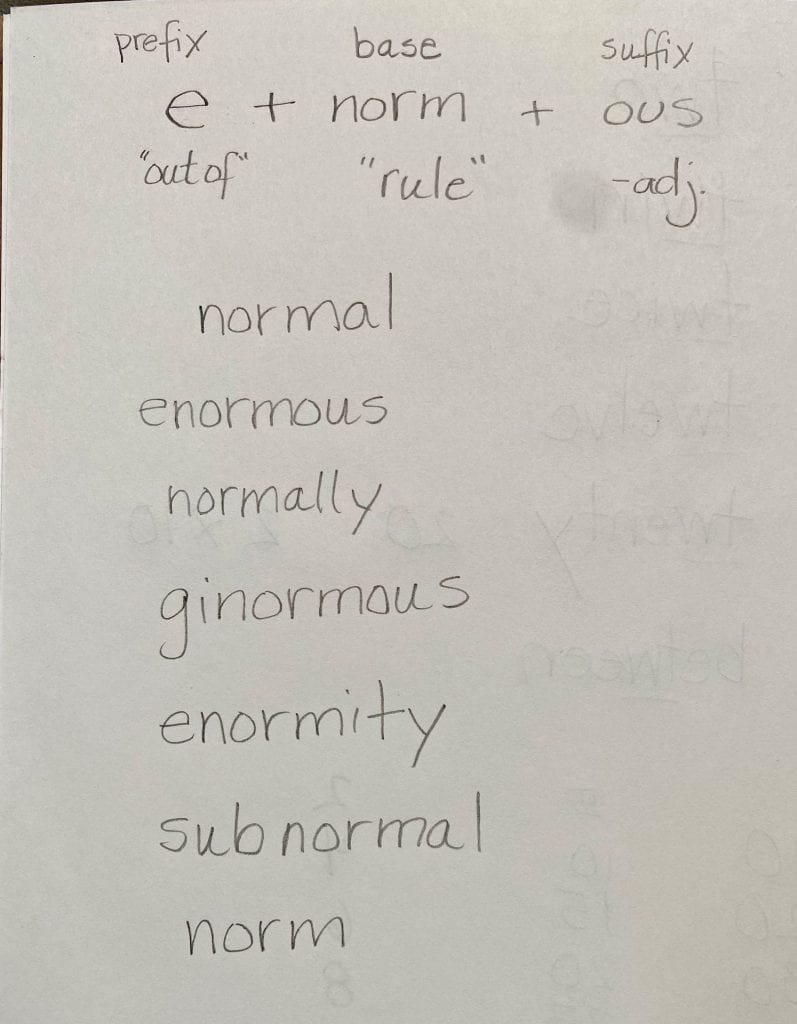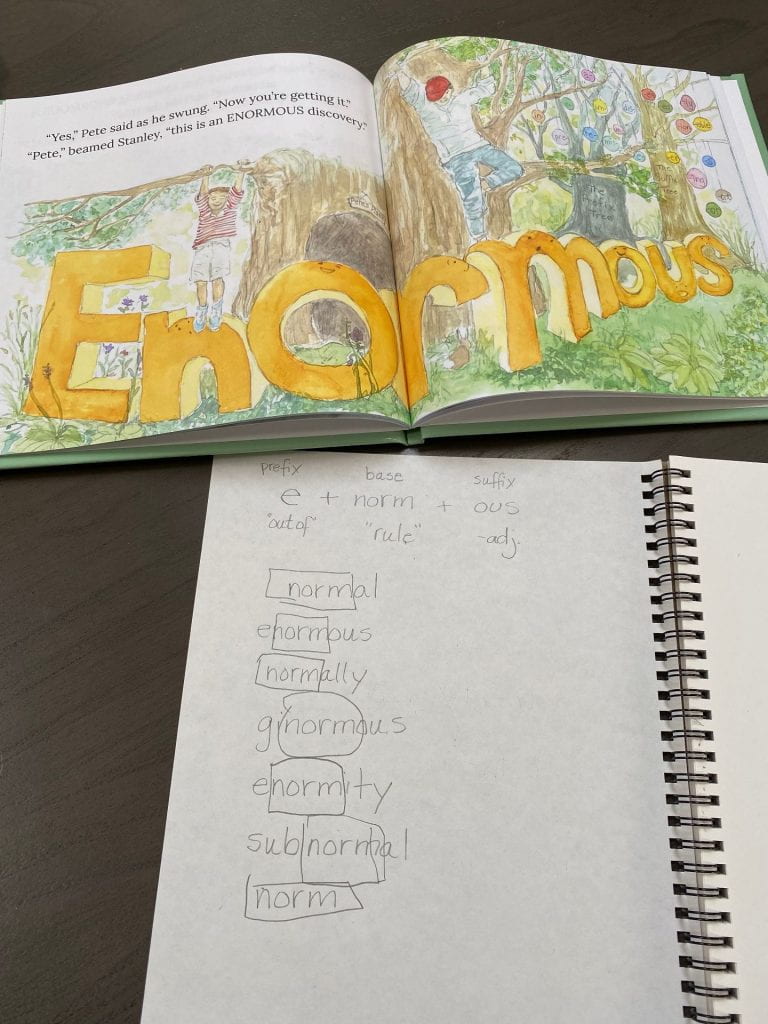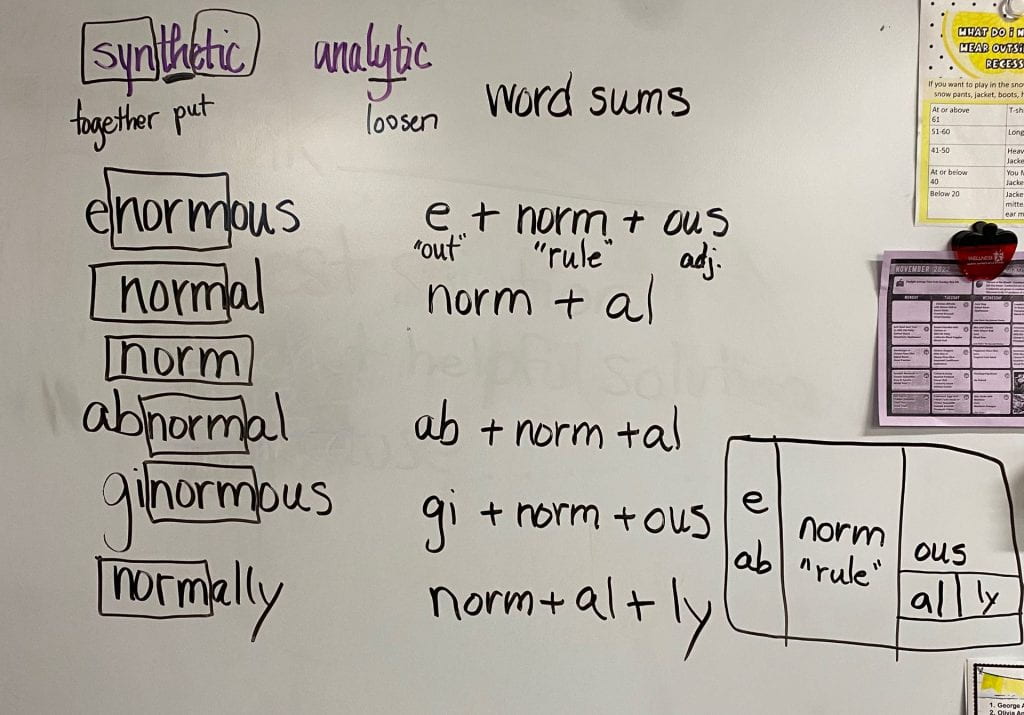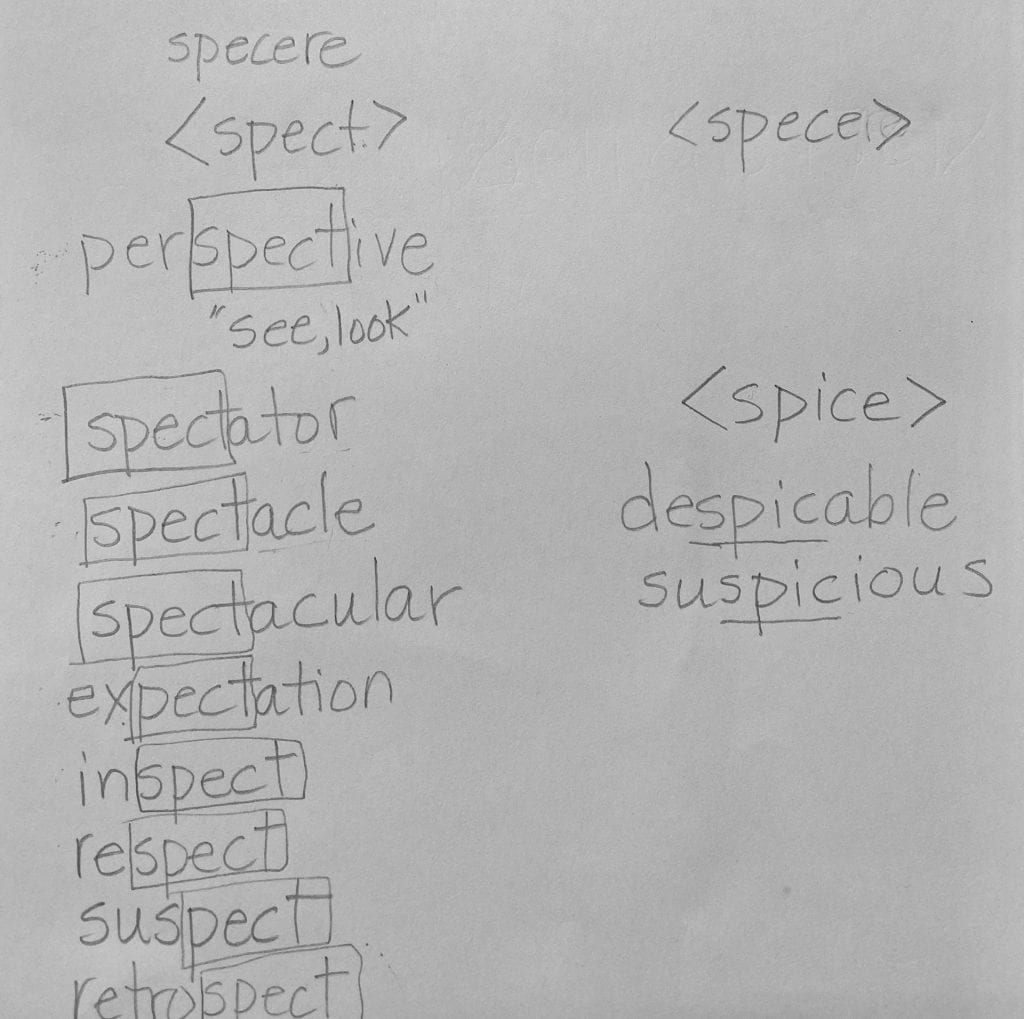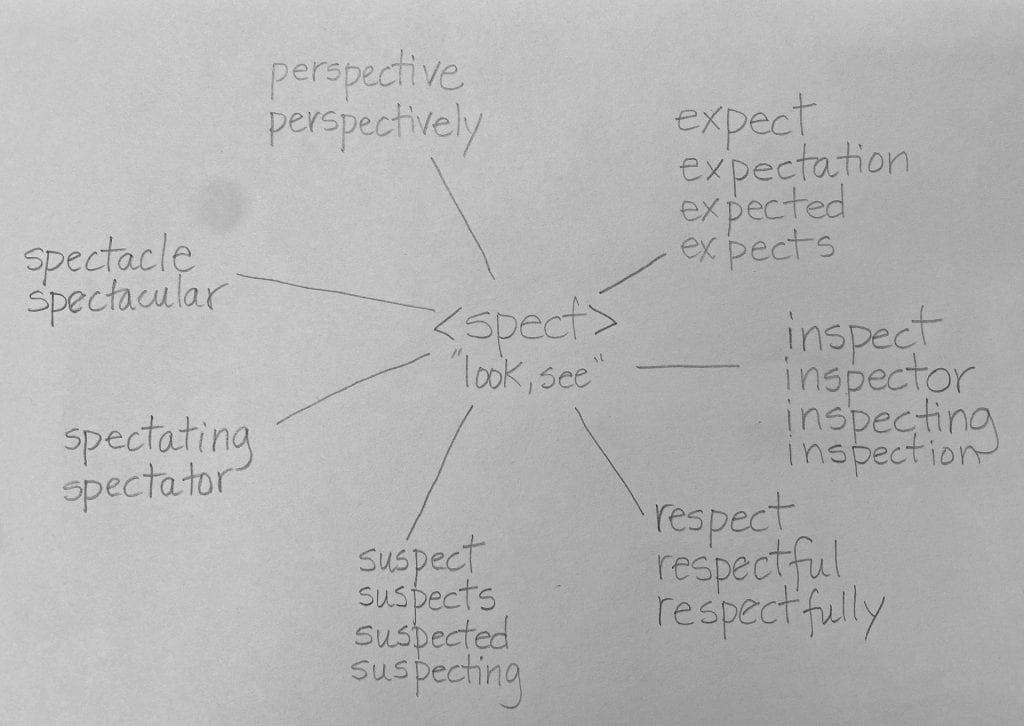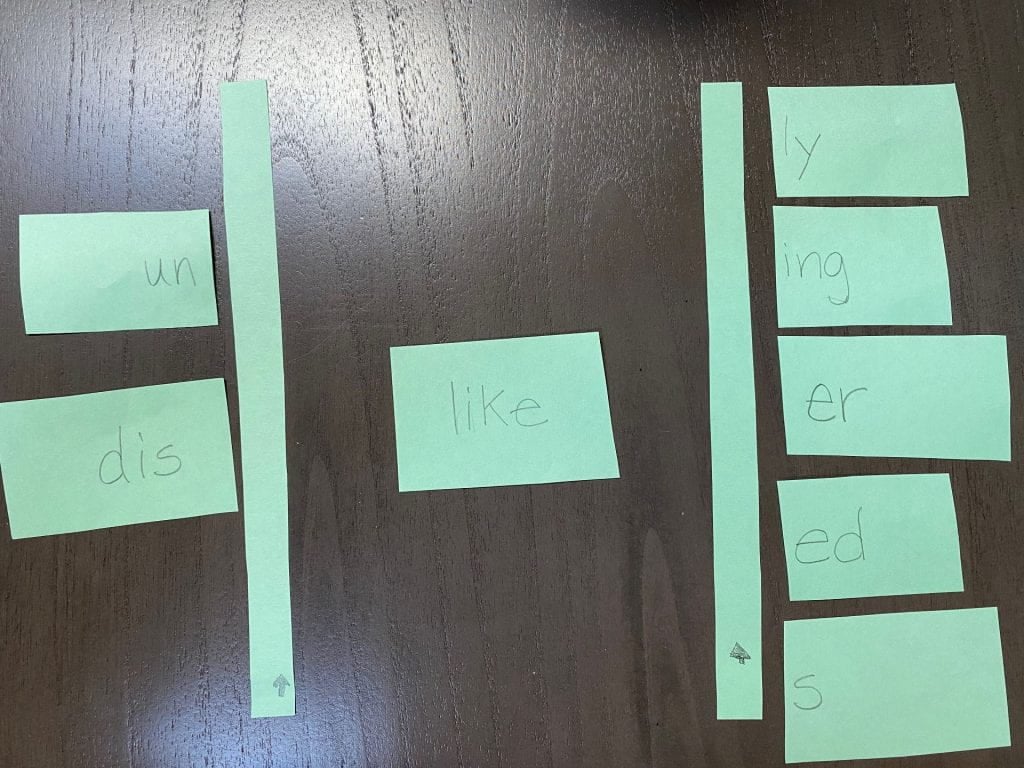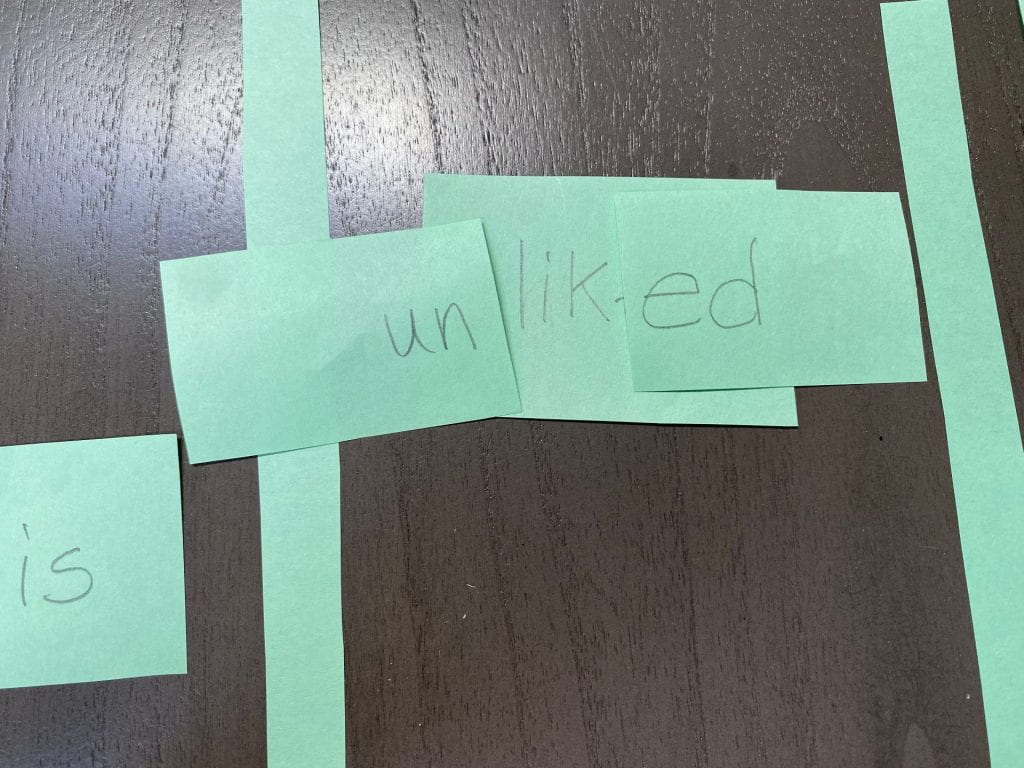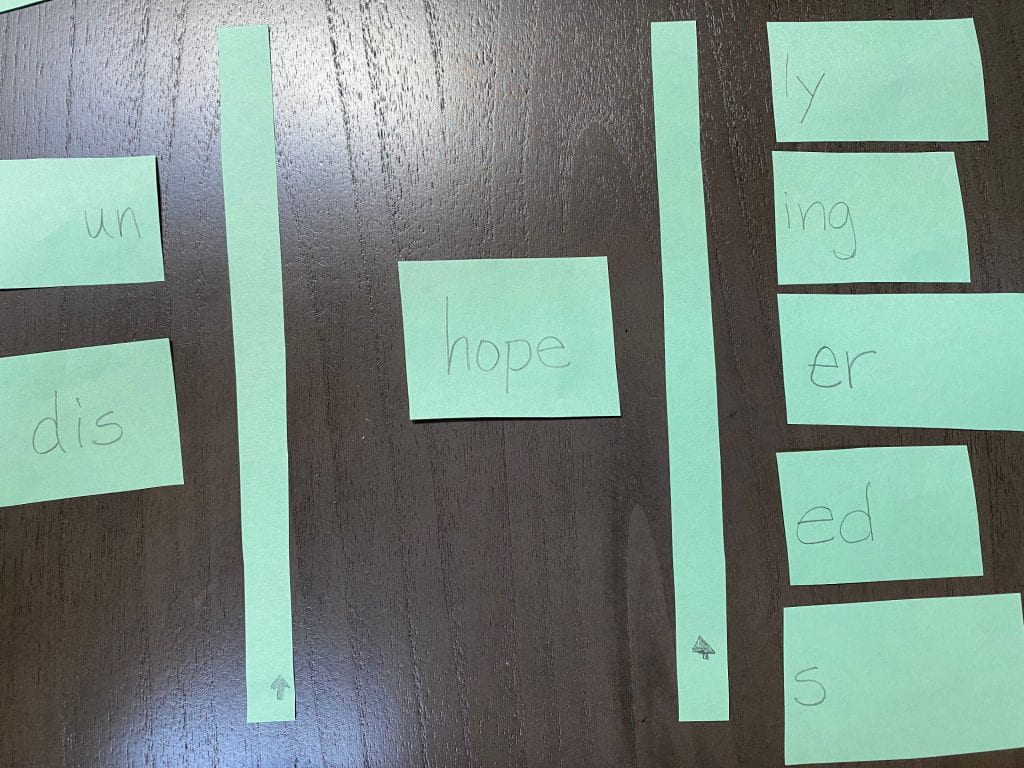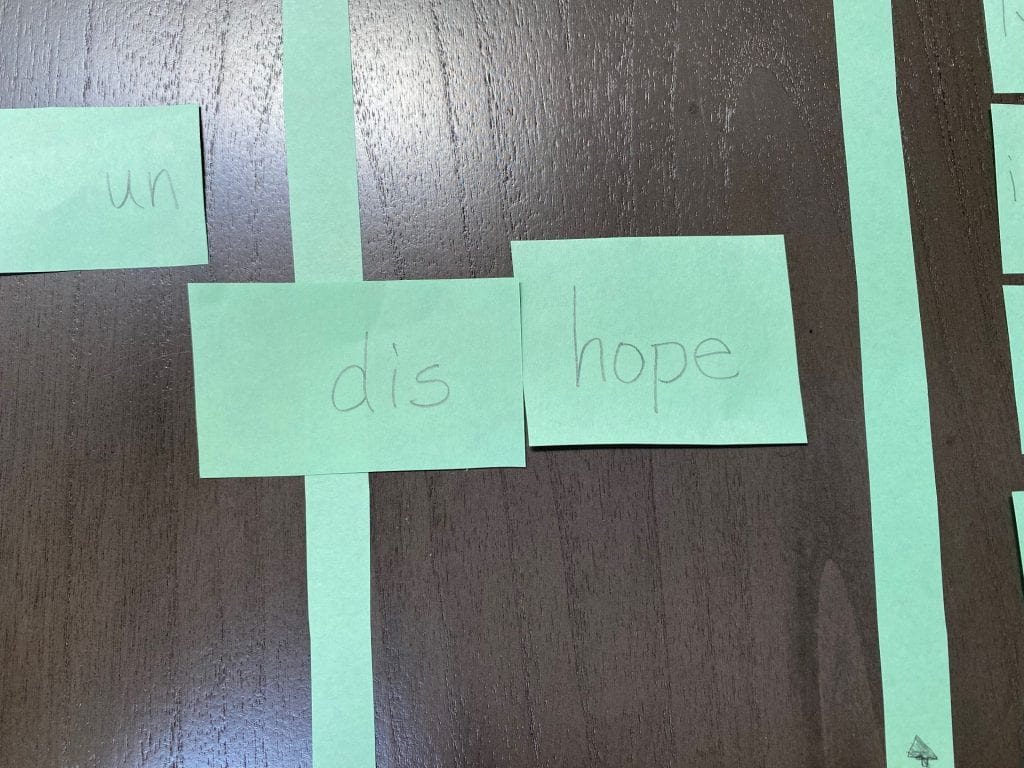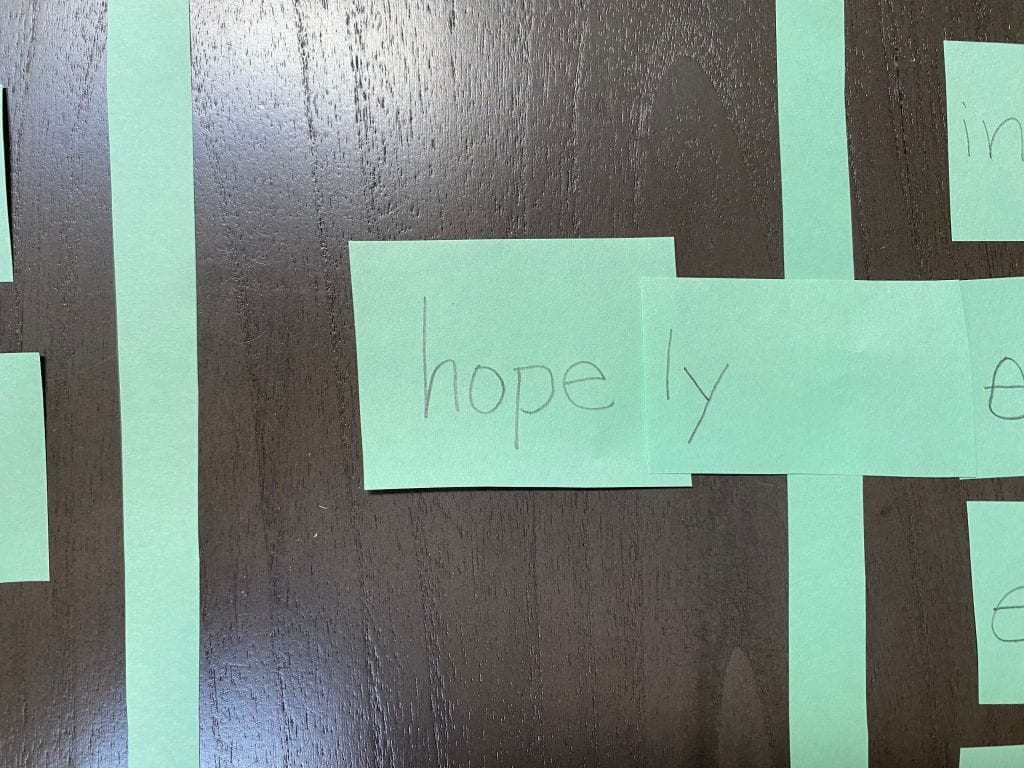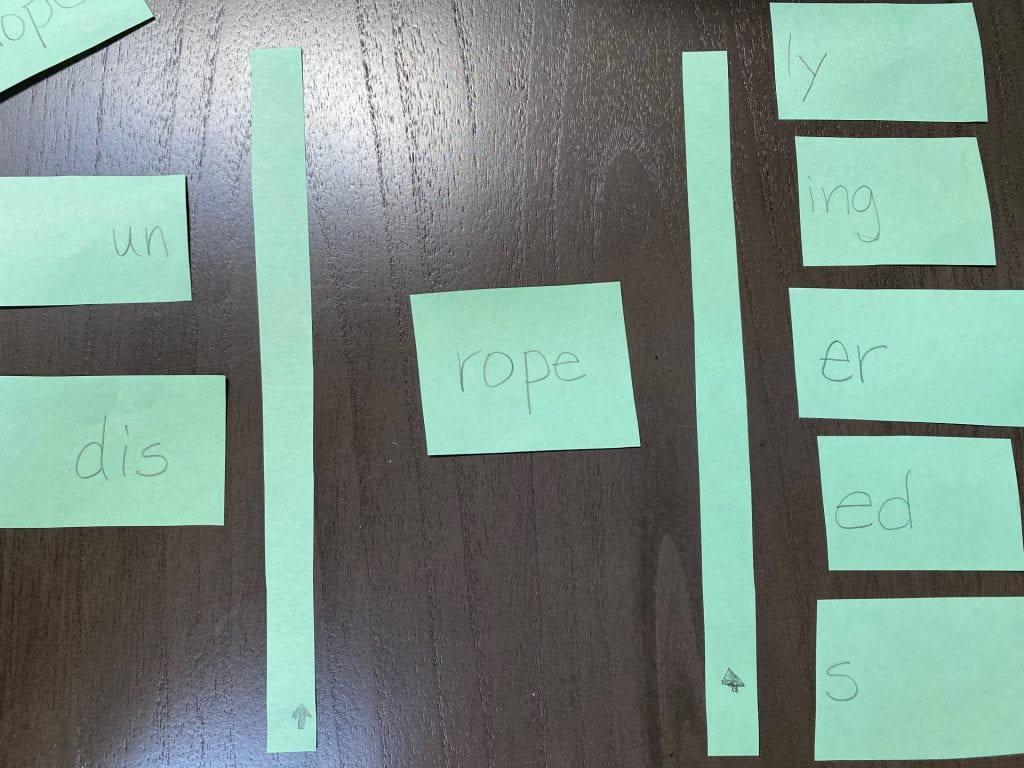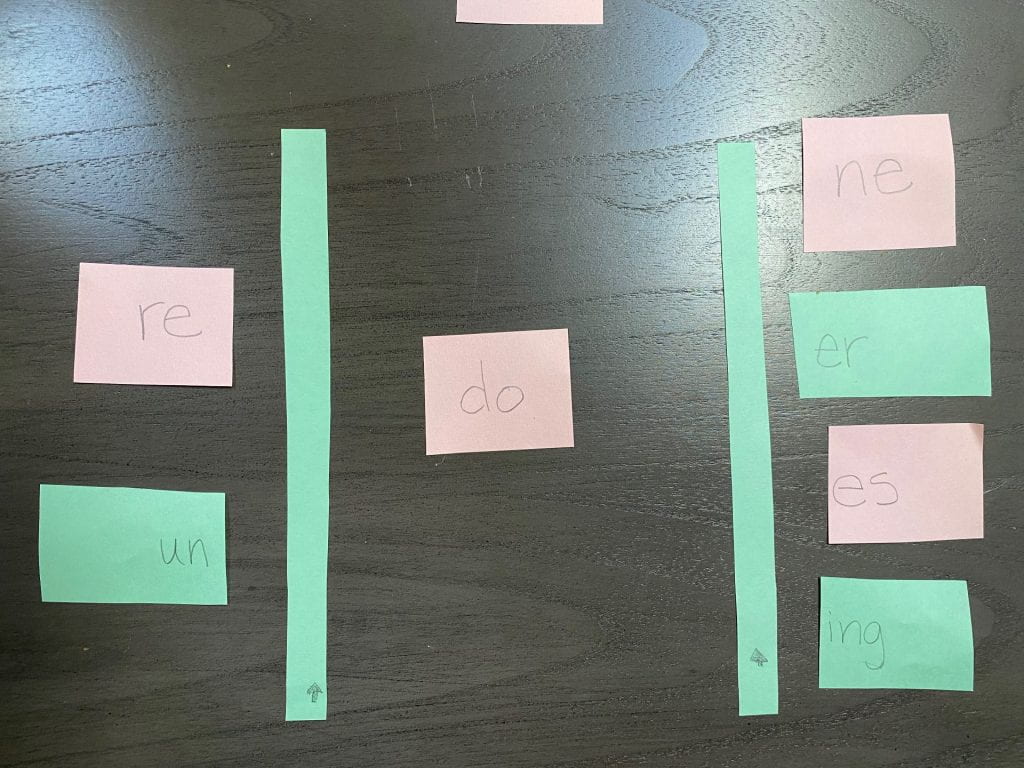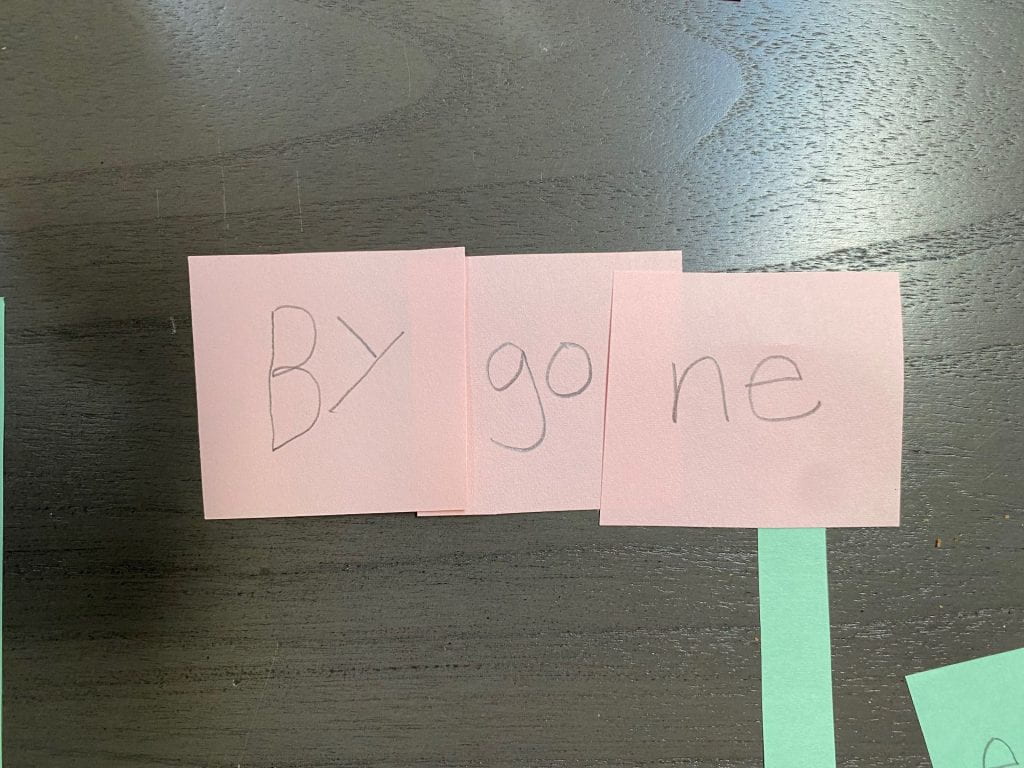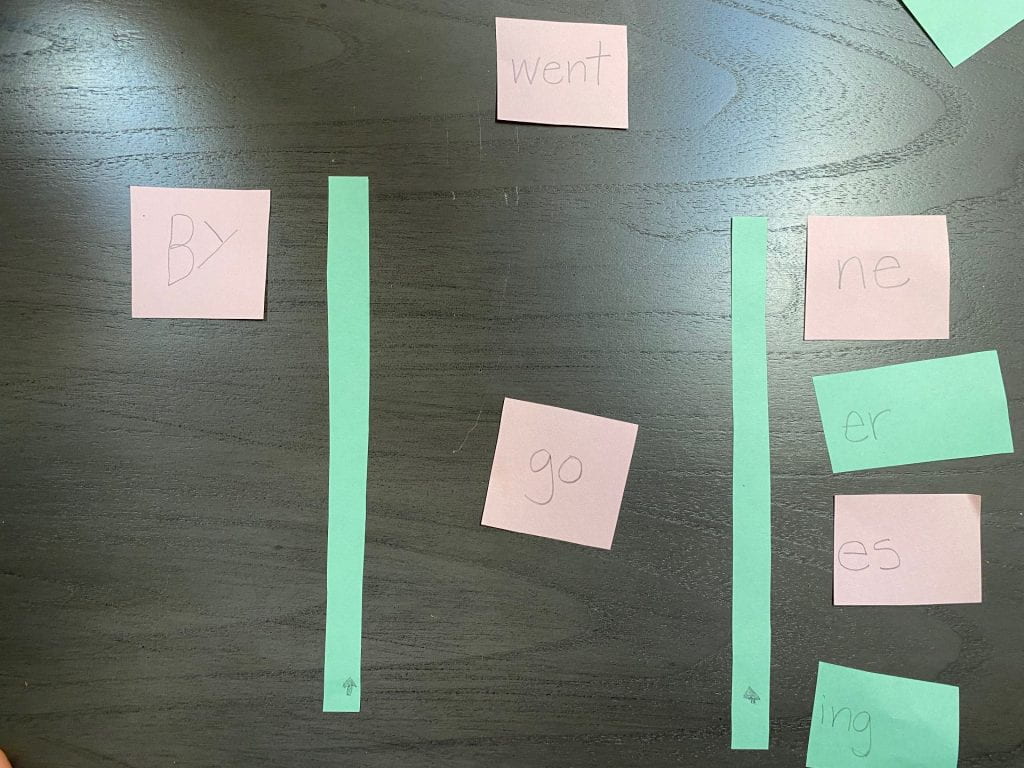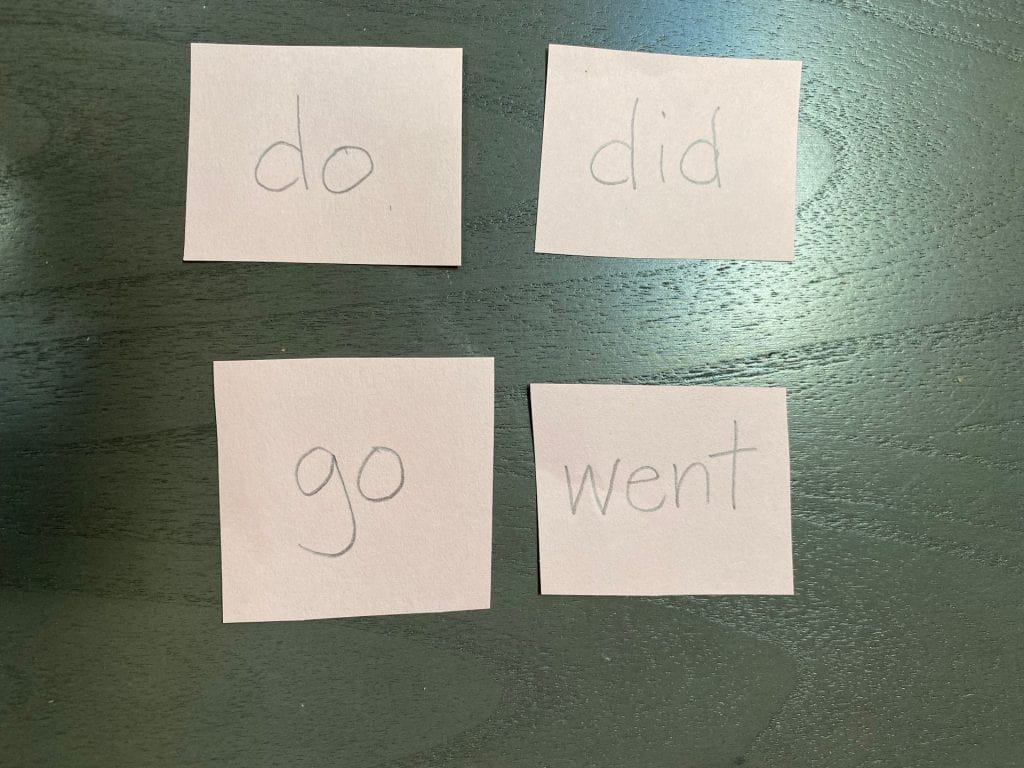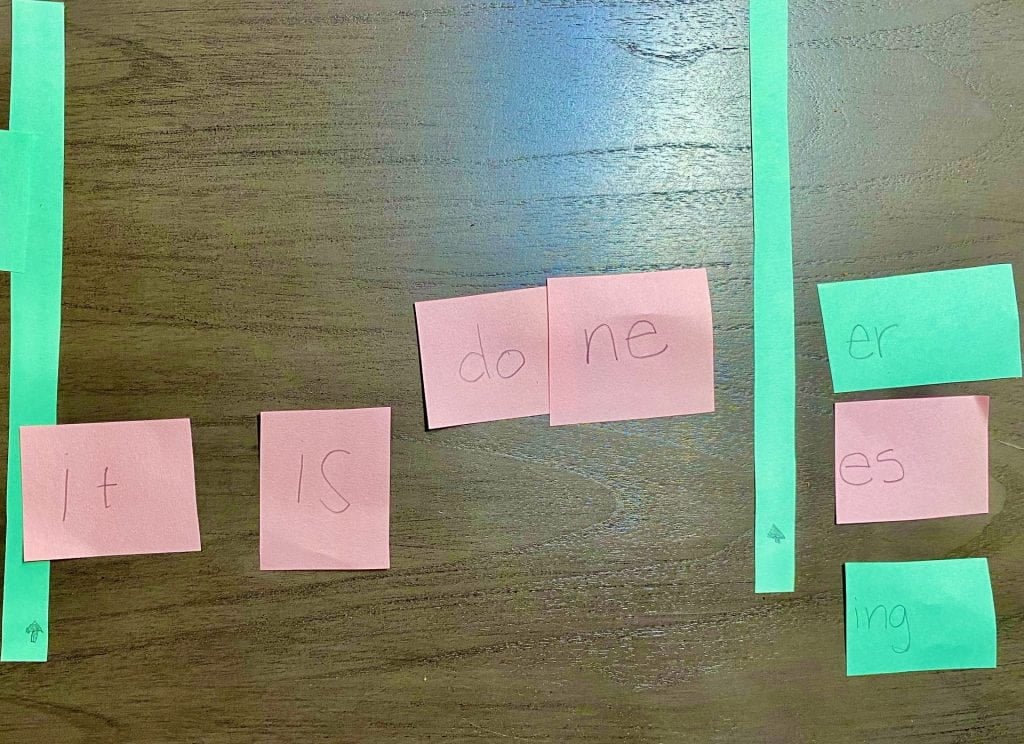New opportunities have opened up for me! I am meeting with almost all of the 5th grade students at my elementary school (half the group on Tuesday, the remaining half on Thursday) for about 25 minutes each week. I am coming into their classroom and one of three grade level teachers is observing the lesson. I am also working with an 8 year old for 6 hours a week in my home!
This week I talked about the spelling of ‘two’ with both groups. Since I was meeting the 8 year old for the first time, I had him use manipulatives. In this way, I could both check his math understanding and also his understanding of the spelling of some numbers. While he was having a bit of play time with the superhero figures we were using, I asked him if he could spell the number ‘two.’ He paused and slowly spelled out, “t.o.w.” I said, “That’s great. You have all the right letters! But the ‘t’ and the ‘w’ need to be together. Let me show you how I know that.”
I wrote the word ‘two’ on my paper and showed it to him. Then I asked him if he noticed whether or not there were any twins in the superhero collection. He did. There were two sets of twins. I wrote the word ‘twin’ on my paper and asked him if ‘twin’ had anything to do with ‘two.’ Then I asked him what the words (spelling) ‘two’ and ‘twin’ had in common. I asked the same questions of ‘twice.’
Next I asked him to count out ten of the superheros. I asked him how many more we would need in order to have twelve. He said, “two.” I replied, “So twelve is two more than ten. It is ten plus two.” He grinned. I added the word ‘twelve’ to our list. Then he laid out two rows of superheros for a total of twenty. He knew that two rows of ten would give us twenty. I added the word ‘twenty’ to our list. Then I wrote the word ‘between’ and asked him to name the superheros that Batman was between. From there we connected the meaning of ‘between’ to the meaning of ‘two.’ Then I went back through the list and underlined the ‘tw’ in each word and asked him why I did that.
From there, I asked him to write down the word ‘ten.’ He didn’t have any trouble. I asked him to write down ‘six.’ Then I said, “If we add ten to six, we’ll have sixteen. What will we add to the spelling of ‘six’ to have the word ‘sixteen’? He wrote ‘ten.’ Perfect opportunity to talk about the <ee> digraph versus the single <e> grapheme in the context of these words! Then we talked about the meaning of ‘ten’ and the meaning of ‘teen’ in the word ‘sixteen.’ He noticed right away that they shared meaning, but not spelling! (He seemed to have an established awareness that that can happen – cool!)
Now that he had an understanding of <teen> in ‘sixteen,’ I asked him to write the number ‘five’ and then ‘fifteen.’ He started writing *’fiveteen,’ but realized that wouldn’t represent how we pronounce ‘fifteen.’ In the context of these two words, we could focus on the voiced <v> in ‘five’ and the unvoiced <f> in ‘fifteen,’ and how the two spellings share meaning but not spelling. As he was thinking about this, he said, “fifteen and fifty both have the /f/!
Before we stopped with the superhero figures, skip-counting and number words, I asked him once more how to spell ‘two.’ Without hesitation he said, “t.w.o.”
The 5th graders were fascinated. They were engaged and quickly recognized the meaning connections between words like ‘two’ and ‘between.’ They helped brainstorm many words with an initial ‘tw’ and we discussed the meaning of each. I made sure the word ‘twilight’ came up because I knew they knew its meaning, but might not have thought of it since the ‘tw’ spelling isn’t initial in the word. At least three students came up afterwards to tell me how cool the discussion was!
Day Two
My copy of Mona Voelkel’s new book, Stanley and the Wild Words arrived in the mail, so I shared it with my 7 year old friend, Michael, and also with the 5th grade students.
I began by reading the book aloud. I paused at times to encourage the students to share their understanding. For instance, I asked what they thought ‘enormous’ meant and then asked for examples of things that could be considered enormous. We talked of whales, dragon teeth, and mountains but also of appetites and loads of wash. Then we talked about the denotation of <norm> being “rule.” I wondered what they thought about when they thought of ‘rule.’ So I asked. The fifth grade students could name several rules they follow at school. One boy defined a rule as a condition that everyone followed. In other words, following the rules is considered normal. When something is outside of what we think of as normal – is bigger than normal – it can be considered enormous.
Below are pictures of what I wrote down as I was reading the book to Michael. As you can see, I began with a word sum for ‘enormous.’ I labeled the morphemes as ‘prefix,’ ‘base,’ and ‘suffix.’ After we had a list of words that shared the base <norm>, I asked Michael to draw a box around the base in each word.
When talking with the 5th grade students I added the term “analytic word sum.” I explained that with an analytic word sum, we begin with the fully spelled word and then loosen it into its morphemes. I pointed out that the bound base <lyt> had a denotation of “loosen.” The prefix <ana> brings a sense of “throughout.” If we begin with the morphemes and join them to form a complete word, that is a synthetic word sum. Having brought up the words ‘synthetic’ and ‘analytic’, I wanted to expand the students’ understanding of them by mentioning other situations in which we use these words. We talked about synthetic materials being put together by man and how analyzing a problem requires us to look closely at each component.
With the large group of fifth graders, I did the boxing of the base and then had them tell me what the word sums would be. As they hypothesized the word sums, I wrote them on the board. When we got to the word ‘ginormous,’ I explained that ‘gi’ isn’t a prefix – it represents the word ‘gigantic’ in this portmanteau word (gigantic+ enormous gives us ginormous). You’ll notice we didn’t include ‘gi’ on our matrix – again, because it isn’t a prefix. This may be the first time I am mentioning portmanteau words to these students, but it won’t be the last. At some point, I’ll ask the students to choose ten of their favorites. Until then, I used the example of ‘brunch’ being a combination of breakfast and lunch. I pointed out that when the two words join to become a portmanteau, letters from each word might be lost. That makes this different from a compound word, where two bases join (intact) to form a new word.
With the fifth graders, I followed this activity by having them write the word ‘help’ at the top of a piece of paper and then writing as many related words as they could think of. Then I walked them through creating a matrix with ‘help’ as the featured base. One of the students thought of ‘prehelpfully.’ I look forward to talking about this invented word and also about matrices next time. Although, before I even began reading the book today, one student said, “I thought of a word for you to explain – one!” Perfect! Doesn’t look like I’ll run out of topics, does it?
Day Three (Days Three through Five focus on my time with Michael)
Today Michael and I read the story of Ibis, a whale who gets caught in netting and almost drowns. It is based on a true account, although the author added details that gave us an opportunity to talk about authors and story writing. Why do authors sometimes embellish the facts? Why did this author give Ibis human characteristics?
While we were discussing the main character’s interest in humans, we noticed that the following illustration gave us the whales’ perspective from deep in the water. Michael had used the word ‘perspective’ earlier, so I pointed it out here. “Isn’t it interesting to see the boat from the whales’ perspective? What do you suppose that word ‘perspective’ means?”
Michael said, “My perspective might be different than yours. Because of where I am standing, it might look different.”
“That’s a great way to define that word!”
I wrote the word down and showed it to Michael. I boxed out the <spect> base and wrote down the denotation “see, look”. Then I pulled up Etymonline and wrote down the Latin root specere above where I had written the word ‘perspective.’ I typed specere in the search bar and looked for other words Michael might be familiar with that had this base (or a variation of this base). When I came across ‘spectator’ I asked him if he’s ever been part of a large crowd – at a sporting event perhaps. He said, “Like at a baseball game?”
“Yes. The people who come to watch, to see the game, those are the spectators.
Next I found the word ‘spectacle.’ Michael said he was not familiar with it, so I told him that I can refer to my glasses as my spectacles. They are what I look through! Then I described another way to use that word. Let’s say I was with a group of people who were all walking slowly, but then one of the people jumped out in front and started dancing and singing. We might say they were creating a spectacle. They were making a spectacle of themselves. In other words, their actions were drawing attention and people couldn’t help but look at them. Then we thought of a few other situations in which people could make spectacles of themselves.
The word spectacular is used to describe things. A sunset might be described as spectacular, but so might a tricky catch in a game of football. I asked Michael to tell me how either of those were related to the denotation of <spect>. He said they were cool to see. He was making the connection between the meaning of the base and the meaning of the words it shows up in! It was around this time that he said, “What about ‘expectation’? Does that word work here?”
I’m sure he noticed my smile at that suggestion. I said, “Let’s see if it comes from the same Latin root. That’s a way to know for sure that the base in ‘expectation’ is related to the base in ‘perspective.’
I read the entry for ‘expect’ to Micheal.
“1550s, “wait, defer action,” from Latin expectare/exspectare “await, look out for; desire, hope, long for, anticipate; look for with anticipation,” from ex- “thoroughly” (see ex-) + spectare “to look,” frequentative of specere “to look at.”
I said, “Look at that. We still use the word in the same way the Romans used it 500 years ago! When we expect something, we are looking forward to it with anticipation. In this word we are combining the base <spect> meaning “look” and the prefix <ex> meaning “thoroughly.” At that point we noticed that even though ‘expect’ has the <spect> base, we no longer include the ‘s’ in that spelling. Etymonline shows us that two spellings were used in Latin. One of those has the spelling we currently use.
It was around this time that he asked about the word ‘despicable.’ I said, “It doesn’t have the <spect> base, but it still might be related. I know there are some alternate spellings for this base. We won’t know for certain until we look!” As luck would have it, it was on the same page as some of the other words related to ‘perspective.’ It also derives from Latin specere. The base in this word is <spice> (which is not at all the word ‘spice’ ). I said, “We might find more words in which the base is spelled this way. Let’s start another list.
When we talked about the word ‘inspect’ meaning to look into something, I also pointed out that if we add an <or> suffix, we would have the word ‘inspector.’ That is the person who is doing the looking. Then I slide my finger back up to the word ‘spectator’ and said, “There’s the <or> suffix! A spectator is the person who is spectating! It was our first look at agent suffixes.
Michael was familiar with the words ‘inspect,’ ‘respect,’ and ‘suspect’ and was able to describe how they connected back to the denotation of <spect>.
Towards the end of our search, we found the word ‘suspicious.’ I listed it beneath ‘dispicable’ and pointed out the spelling of the base. I asked him what being suspicious of someone might have to do with looking or watching. Michael quickly replied that when you are suspicious of someone, you watch everything they do.
At this point, we had spent about 30 minutes talking about these related words and their connection to “see, look, watch.” As a final way to look at what we collected, I made a word web. As I was writing, Michael noticed that some of the suffixes could be used on several of these words (expecting, spectating, suspecting, inspecting, etc.) He also used some of the words in sentences which reinforced his understanding of their meanings.
My goal with this activity wasn’t so much that Michael would be able to walk away knowing how to spell these words, but rather that he notice the meaning connections within word families. I was helping him broaden his vocabulary by taking a familiar word and connecting it to unfamiliar words that share that base. I was showing him that words come in families and that he can expect this kind of familial relationship not only with spelling, but with meaning. I was showing him how the English language is structured.
Day Four
On this day I took pieces of paper and wrote suffixes on some, bases on others, and prefixes on yet others. I took two long pieces of paper and created a matrix. We started with the base ‘like.’
The object was to see whether these particular suffixes and prefixes could work with this base. As Michael moved each affix towards the base and read the word, he described what the word meant and sometimes even used it in a sentence. A cool thing happened when he was fixing the <un> prefix to the base <like>. Instead of announcing the word ‘unlike,’ he announced the word ‘unliked.’ I immediately said, “Oh, neat! As you said the word, you added not only the <un> prefix, but also the <ed> suffix! You created the word ‘unliked’! He smiled and said, “Yup. The villain was unliked by the superhero!” The benefit of having these suffixes on movable pieces of paper is that Michael is already recognizing that the <ed> suffix will sometimes replace the single final non-syllabic <e> on the base. He moved it into place himself. This suffixing convention will be revisited many times. This is the second time we’ve talked about it.
He decided that all of these prefixes and suffixes could be used with this base.
Next I moved the base <like> out of the way and replaced it with <hope>. Now Michael had to decide if these same prefixes and suffixes work with this new base.
He started with the prefixes and grabbed <dis>.
He scrunched his nose and said, “Nope!” And moved <dis> to the side. Then he tried <un>. He was undecided about this one. When he tried to talk about what it would mean, he used the word ‘hopeless.’ I said, “Ooooh! We can add the suffix <less> to our group of suffixes. I’m so glad you thought of that word!” Michael grinned.
As he pulled the suffixes <ing>, <ed>, <er>, and <s> next to the base to see if they formed a word he recognized, we noticed that the suffix didn’t always replace that final non-syllabic <e>. We talked about vowel suffixes and consonant suffixes. The suffixes that replaced the final non-syllabic <e> were <ing>, <ed>, and <er> – all vowel suffixes.
Next he matched up the base <hope> with the suffix <ly>.
Hmmm. He said the word a few times, looked at me and said emphatically, “Nope! I can’t think of how to use that one!” We laughed. Then he slid the <ly> suffix out of the way and we looked at the matrix full of morphemes that worked together. We slid the base <hope> out of the way and pulled in the base <rope>.
By this time, Michael knew what to do. He moved the affixes next to the base and thought about whether it was a word that made sense to him. He slide <dis> and <ly> to the side. He noticed, too, that when he paired up the base <rope> and the suffix <er>, he was talking about a person who did the roping. I quickly slid <hope> back into place to see if a ‘hoper’ was a person who did the hoping and then if a ‘liker’ was a person who did the liking. On another day we’ll test that suffix some more! Does it always refer to a person?
After this activity, I read the book From Wolf to Woof by Hudson Talbot. Michael is very interested in the evolution of living things, so when I found this book, I knew he would be interested. Besides, I saw in the title the opportunity to talk about /f/ and /v/. We talked about these two when we talked about ‘five’ and ‘fifteen’ and I was looking to reinforce that concept.
I wrote down the word ‘wolf’ and asked what word we use if we are talking about more than one wolf. Michael said, “Wolfs.”
I asked, “Do you notice how it feels in your mouth to go from the /f/ to the /s/?” We tried it a few times. “Now let’s see how it feels when we go from /v/ to /s/ as in ‘wolves.’ We agreed that was a smoother transition. I wrote down the spelling of ‘wolves’ and showed Michael the switch from <f> in ‘wolf’ to <v> in ‘wolves.’
I had a list of other words where this happens and added them to the paper. We worked one at a time and Michael wrote the spelling of the word as a plural. We toggled the <f> to a <v> and added an <es> suffix. We noted that the word ‘leaf” had an <ea> digraph and the word ‘loaf’ had an <oa> digraph. We paused to talk about what a digraph was and thought of at least two other words that had each of those same digraphs. Then we came to the last two words. They were slightly different than the others. They didn’t have a final <f>. They had a final <e>. Michael recognized that the final <e> wasn’t being pronounced. That meant that it was a grapheme whose job was something other than representing pronunciation. But what? Well, it was signaling that the previous vowel (<i>) would have a “long” pronunciation. Does that change what we’ve been noticing about the /f/ to /v/ in these words? No. Not at all. We will still toggle the <f> to a <v> and add an <es> suffix. In this case, the <es> suffix will replace the single final non-syllabic <e> as it does in many other words.
Because we are also focused on meaning, we had a great discussion about the pronunciation of ‘live’ when it functions as a verb and when it functions as an adjective (There were live snakes in the exhibit. I live down the street.) With this word (and many others) we need to see the word used in a sentence to know how to pronounce it. There are other words like this and we will consider them at another time.
Day Five
I began with the matrix again – the one in which morphemes were written on slips of paper and we could move them around. Michael was enthusiastic. The base I chose today was ‘do.’ (There is no significance to the two colors. It was just the paper I had on hand.)
Interesting things we noticed.
– The base is pronounced the same in ‘doing’ and ‘doer,’ yet different than in ‘does’ and ‘done.’
– If we were to strictly rely on pronunciation to spell ‘does’ we might think it is spelled as *duz. But then we wouldn’t see that it is built from the base <do>.
– Even though there is a shift in pronunciation, there is not a change to the spelling of the base.
– The base represents the meaning.
– Instead of adding an <ed> suffix to show past tense, there is a different spelling of the base.
– The original spelling of ‘did’ in Old English was dyde. According to Etymonline, the final <de> functioned as a suffix and has become our current <ed> suffix.
-When the <er> suffix is added to the base, we get the word ‘doer.’ In this word, the <er> is an agent suffix. A ‘doer’ is a person who is doing something. We can compare this suffix to the <er> in hoper, roper, and liker.
After exploring and noticing things in this <do> matrix, I pulled <do> and replaced it with the base <go>. Michael rejected both the <re> and the <un> prefix, but grabbed a piece of paper and wrote ‘by.’ Then he put it in front of the base and pulled the <ne> suffix to the end of the base. “Bygone! That’s a word, right? Let bygones be bygones, meaning something happened already.”
“Wow! You’re right. In this case, the <by> is not a prefix, it’s another base. So bygones is a compound word. Nice going!”
Michael was familiar with what a compound word was and was able to give me a few examples, so we were able to move on.
We noticed that ‘go’ was similar to ‘do’ in that neither could show past tense by adding an <ed> suffix. They had different spellings to represent that.
Just as we were finishing up, Michael grabbed two more pieces of paper and wrote a sentence. Perfect!

